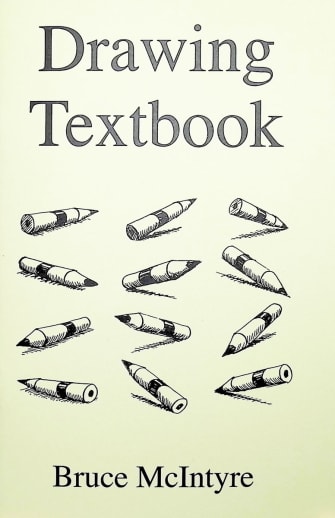We have enjoyed drawing with Bruce McIntyre's step-by-step method and clear instruction. Drawing starts so simply that even the youngest students will be able to participate. Skills are mastered in a series of 222 drawing exercises that teach the seven basic principles of drawing: surface, size, surface lines, overlapping, shading, density, and foreshortening.
Drawing Textbook
Description
Drawing Textbook is designed to teach drawing at all levels of education from first grade through adult education classes. The simplest of tools are used for this drawing - education process - a simple pencil and ordinary paper.
There are 222 drawing exercises in Drawing Textbook that are used to introduce, teach, test, and give practice in the use of the Seven Principles of Drawing and Alignment, used by everyone who knows how to draw. Each exercise introduces a new idea or adds to previous drawing concepts already introduced.
Drawing Textbook gives a background discussion of drawing and how the following topics relate to it: education, communication, talent, art, public school art programs, and goals for the drawing student.
| Product Format: | Softcover Book |
|---|---|
| Grades: | 1-AD |
| Brand: | ADVP |
| Author: | Bruce McIntyre |
| Length in Inches: | 8.5 |
| Width in Inches: | 5.5625 |
| Height in Inches: | 0.25 |
| Weight in Pounds: | 0.2 |

